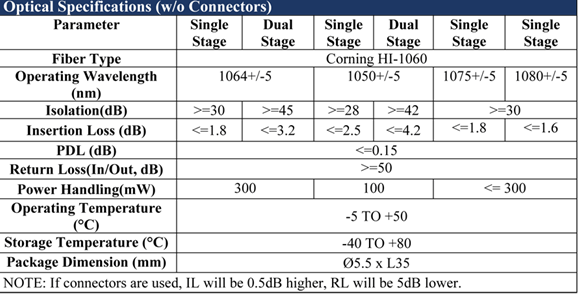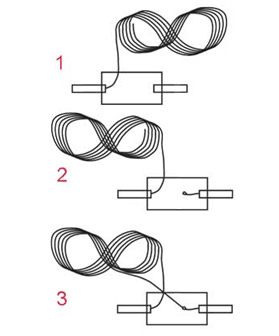An optical fiber network is simply unimaginable without optical fiber cables. These cables are designed for both indoor and outdoor connections. Installation is the most important aspect of fiber optic cable network deployment as it can decide the future of the network. OFNP and OFNR are two types of fiber optic cables that are used in buildings. NEC (National Electrical Code) has demarcated a building into three areas – riser, plenum and general purpose areas.
OFNR vs. OFNP
Plenum areas are those parts of the building that enable easy air circulation. The area under a raised floor and also that above a drop ceiling is called plenum area. Intra-building fiber optic cables are mostly installed in this region. If we use fully fire-resistant and low smoke solution for deploying the optical fiber network, it helps reduce the loss in an unforeseen incident. OFNP denotes Optical Fiber Nonconductive Plenum. The OFNP fiber optic cableis fully fire resistant and is rated the highest in fire-resistance and low smoke production. Its unmatchable ability to resist fire etc, make it irreplaceable.
Riser is basically a duct or shaft, commonly known as openings that are running vertically covering floors in common. OFNR stands for Optical Fiber Nonconductive Riser. So, the optical fiber cables installed in the riser region of the house are called as OFNR cables.
While comparing OFNR vs. OFNP, it is worth noticing that OFNR fiber optic cable cannot be used in plenum areas to replace OFNP cables, however, the latter can be used in the riser areas too.
Principles of installation pertaining to Environmental Limits
Installation principle of environmental limits states that the installer should take care of factors such as temperature range, moisture, bend radius, and crush loads. The basic idea is to keep the fiber safe and overall installation viable as well as functional for longer time. Setting limits of temperature and moisture conditions is done by makers likeCozlink and other features are therefore, mentioned in specification sheet like below to give the installer a fair idea about the correctness of the choice of cable according to the environmental conditions.
If any of these conditions are ignored, the situation may lead to attenuation or fiber breakage, thereby reducing the fiber life and hitting the sustainability of the network badly.
Principles of networking that cover installation limits
Principle of installation of fiber optic network involving installation limits expects the expert to respect the installation limits mainly. Installation limits that need to be respected for successful as well as sustainable installation are:
- Avoid twisting – avoiding it may lead to breakage
- Respect installation load limit – Know and stick to the installation load limits. Required information is available in cable specification sheet. The installation load limit can be respected by using any one of the methods: a) using a pulling eye and swivel with a shear pin, b) using a pulling device in combination with a slip clutch, and 3) using a pulling device with a load gage.
- Stick to installation temperature range
- Comply with storage temperature range
- Respect the installation bend radius limit
How to reduce the installation load
The installation load can be reduced by using intelligent method. There are four methods quite popular amongst installers. The first one is use of lubrication that matches with fiber jacket color. Lubrication does not require pulling the cable by force, thus, helps in reducing the installation load. Second method is figure 8 installation where the cable is put into and taken out of the manholes placed next to each other in a figure 8 pattern. This pattern is restricted to 24 inches of height due to practical reasons.
The third method involves making multiple short pulls instead of one long pull. Multiple pulls of reduced length are easy to carry out and reduce load too. The fourth method involves manual pulling of a 600 pound-force cable. All these methods make use of a pull rope.
NEC compliance is another important principle that helps achieving successful installation. According to NEC, the optical fiber cables need to carry the requisite fire and low smoke ratings. Also, the areas are pre-defined. NEC rating categorizes the fiber optic cables as OFNP, OFNR mainly. The other approved ratings are OFCG, and OFNG Etc. All these cable types correspond to the conditions that prevail in various areas of the building.
Horizontal connections require OFN or OFC-rated cables. Optical cable running vertically between floors require OFNR or OFNC-rated cables and those passing through air-handling plenums require OFNP or OFCP-rated cables. While choosing substitutions, one can refer to this NEC compliance substitution table:
Principles of cable placement
Cable placement means installation without pulling. The installer needs to limit the long-term bend radius equal to or minimum of 10x the cable diameter. For the cables running along the same path, one must use process of bundling. This process reduces the risk of bend radius violation and simplifies circuit architecture. Secondly, installer should make use of hands to tie the cables as loosely tied cables do not pose threat to the overall jacket structure. The third principle is segregation of fiber cables. This principle enables easier identification and avoiding of crush-load variation. Thirdly, make it a point to leave service loops all along the link. Service loops allow the user to have a buffer cable that can be pulled into problem areas. These loops provide affordable alternative to replacing the whole link in case of any outage.
Finally, securing the cable is important too. Areas where fiber optic cables have been installed should be earmarked as “Fiber Optic Cable.” Such markings prevent these networks from electrician who will not splice them by mistake. Also, installers will be informed about not using this connection as a ladder.
Conclusion
NEC compliance is important for error-free installation of fiber optic cabling deployments. Following the basic rules of installation can help achieve better quality networks with long range. All industry approved OFNP, OFNR, OFCG etc types of cables can be ordered online at cozlink.com








